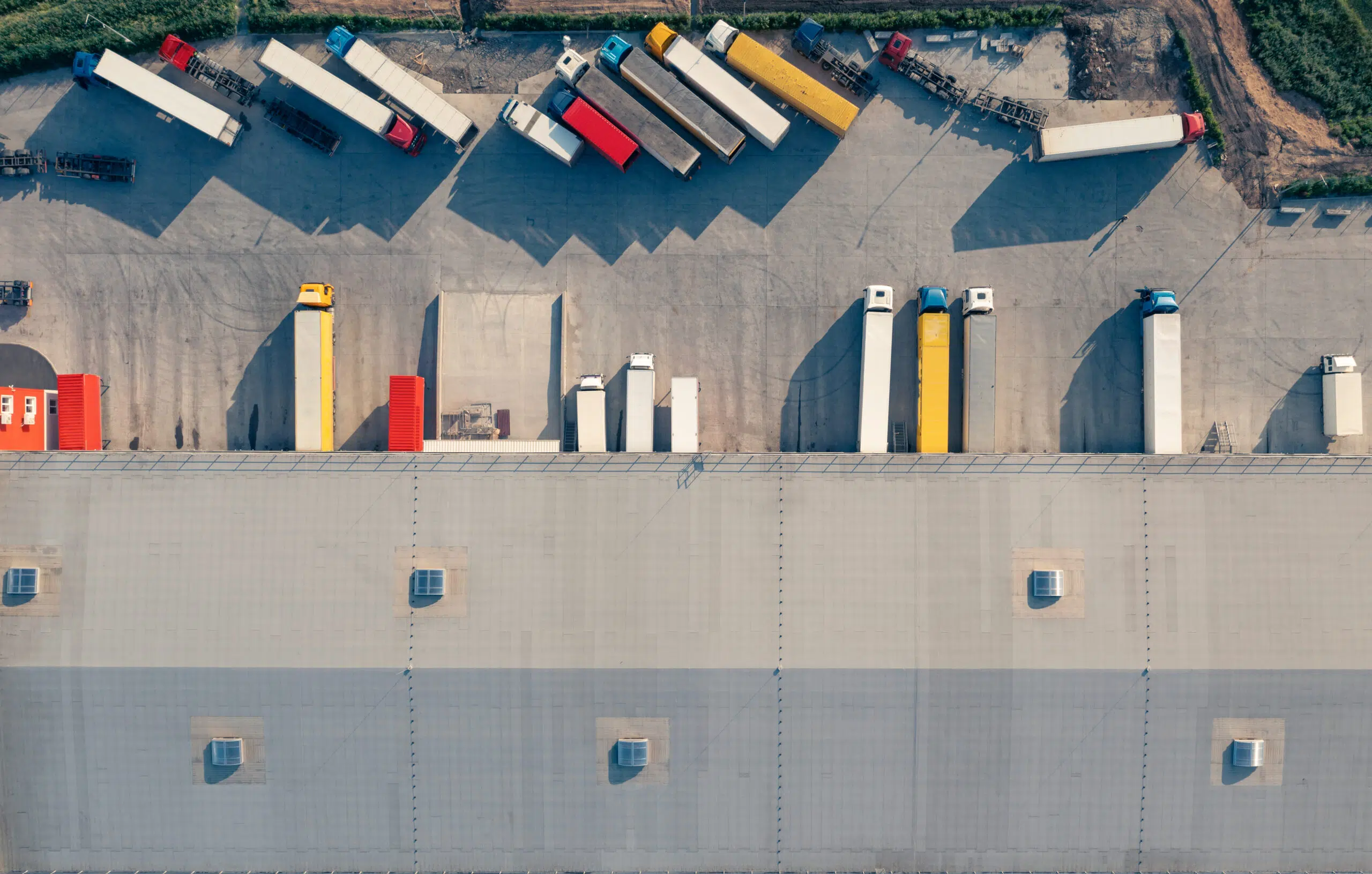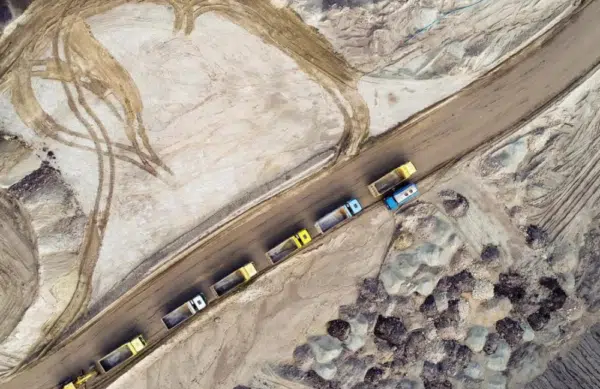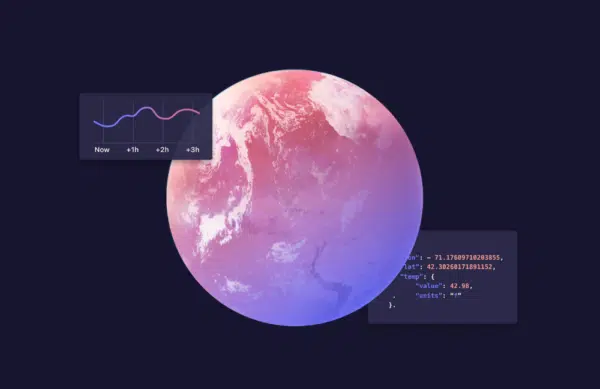Over the past few years, we’ve seen the explosive growth of Machine Learning and Artificial Intelligence (AI), transforming and unlocking untold possibilities across all sectors and businesses. This digital revolution is particularly notable within logistics and transportation.
Rising sea levels put coastal transport facilities at risk; more intense heatwaves call for infrastructural modifications; amplified cold spells make winter operations difficult to manage; greater precipitation raises flooding concerns for rails and roads alike – and that’s just the tip of what we’re facing.
The U.S. Environmental Protection Agency has acknowledged that “A reliable, safe, and efficient U.S. transportation system is at risk from increases in heavy precipitation, coastal flooding, heat, wildfires, and other extreme events as well as changes to average temperature.”
Dynamic solutions that harness improved modeling and AI will be needed to help us make better operational decisions as these conditions continue.
This blog will explain how newfound tech revolutionizes transportation and logistics management by integrating AI and predictive weather analytics. A magnifying glass reveals a future where unnecessary downtime due to weather gets eliminated, drivers’ safety becomes substantially uplifted, saving costs takes center stage, and operational efficiency skyrockets.
What is Weather AI for Transportation and Logistics?
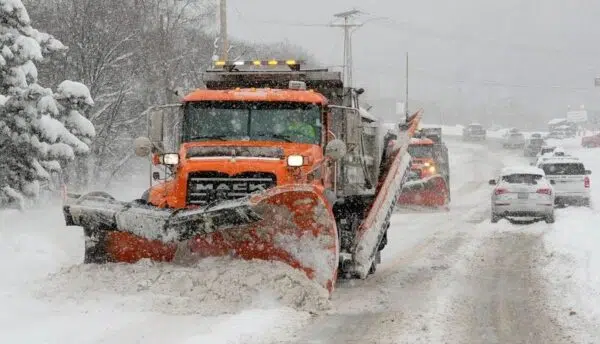
At its core, weather AI for transportation and logistics refers to the use of artificial intelligence technology to improve weather forecasting, prediction, and output. Weather AI contributes to predictive analysis systems and decision support systems within transportation and logistics.
Weather AI for transportation and logistics provides hyper-localized weather forecasts specific to your fixed locations, drivers, and routes. It breaks down large geographical zones into smaller regions (from countries down to individual roads), delivering detailed reports concerning each segment.
By seamlessly integrating new technology with existing operations frameworks, AI for transportation brings huge potential benefits – greater efficiency via optimal routes or scheduling to advancing safety measures during high-impact weather conditions.
The Impact of Weather on Transportation and Logistics
The weather holds substantial sway over the transportation and logistics industry, governing the immediate operational aspects and long-term strategic decisions. Let’s delve deeper into some areas that face a direct hit during a significant weather shift.
Road and Rail Conditions
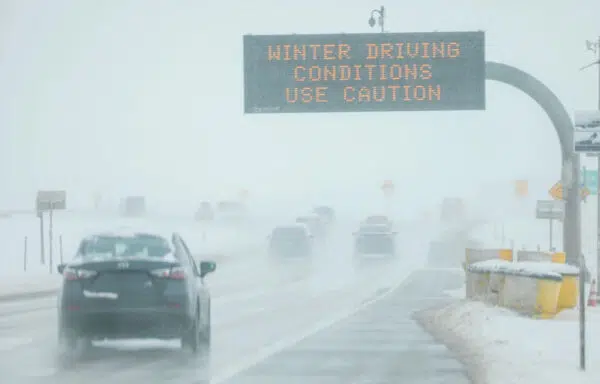
Unpredictable weather patterns can greatly disrupt road and rail conditions. Rain or snow might render routes slippery, hazardous ice could lead to blocked roads, fog may reduce visibility significantly, and high winds could topple loading equipment or goods in transit.
As analyses from the Federal Highway Administration highlight, each year, 24 percent of weather-related vehicle crashes occur on snowy, slushy, or icy pavement, and 15 percent happen during snowfall or sleet. These adverse conditions create delays, such as limited views, crashes, and slippery roads. Effective utilization of AI for transportation can aid in predicting such disruptions and operating around them.
Maritime Conditions
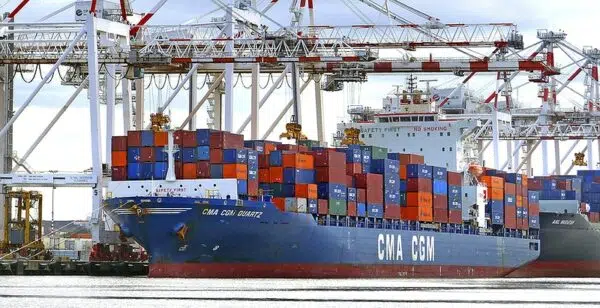
Maritime logistics are particularly vulnerable to unpredictable weather events. Storm surges disrupt port activities, heightened wave periods affect ship cargo stability, and increased wind speeds can drastically impede operations.
A report published by RTI International, a research institute for the Environmental Defense Fund (EDF), revealed that the global shipping and port industry is susceptible to billions of dollars in infrastructure damage and trade disruption from climate impacts. Unexpected weather changes will cost the shipping industry up to $25 billion every year by the end of the century.
Thus employing advanced tools like weather AI for improved decision support can prove decisive in mitigating such risks.
Quality and Transported Goods
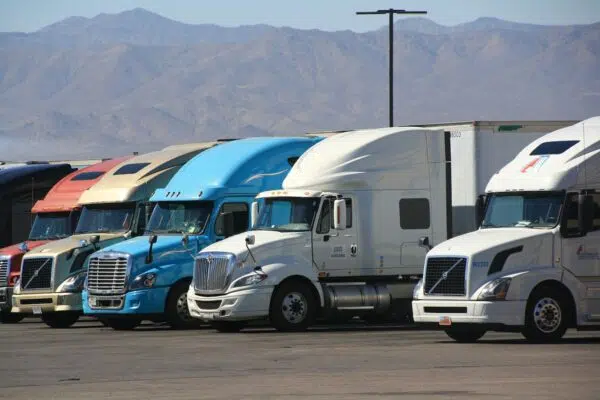
On another front, temperature fluctuations pose a daunting challenge in preserving the quality of transported goods – especially those requiring specific environmental conditions like food supplies or pharmaceutical products.
Businesses have sometimes lost millions due to spoilage caused by poor environmental control during transit. Losing costs due to lack of environmental control in a truck is an area where efficient use of artificial intelligence in transportation solutions concerning real-time tracking and automated regulation could help prevent such scenarios.
How Can Weather AI Improve Logistics Operations?
Navigating the unpredictability of weather conditions can be one of the most challenging aspects of transportation and logistics. However, weather AI can drastically improve predictions and responses to such challenges. Here are four key strategies that leverage this in transportation effectively:
Planning Ahead With Early Warning Systems
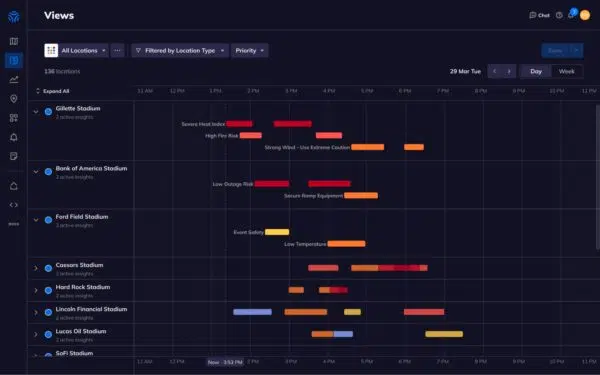
An early warning system is vital in leveraging weather AI into logistic operations. Here is what the process of using one could look like:
- Using AI-based technology to predict severe weather or road conditions across planned routes
- Adapting delivery and driver schedules, changing routes, and pausing operations as necessary, balancing efficient delivery with staff safety
- Sharing forecasts with employees, drivers, and customers, keeping them updated with changes in operations that may lead to delays or disruptions.
Applying such predictive analysis allows you and the clients to prepare adequately, reducing potential operational hiccups.
Improving Communications and Driver Alerting
Seamless communication within the transportation industry ensures every stakeholder stays informed about changing weather patterns affecting their cargo’s movement. Weather AI can greatly enhance trucking and logistics operations by:
- Syncing with existing communication channels to automatically send alerts about real-time changes on a driver’s route.
- Promptly delivering relevant information directly to drivers through their mobile devices or onboard equipment.
These measures significantly enhance emergency response times while contributing immensely to maintaining safety standards.
Optimizing Fleet Maintenance
When weather is bound to ground vehicles and cancel deliveries, AI can help optimize fleet maintenance by improving when you schedule maintenance. For example, say there is a snowstorm that will prevent trucks from passing through a mounting pass. With weather AI, operations leaders can inform drivers of the optimal time to perform any maintenance on their vehicle rather than not using the time at all. This proactive approach safeguards vehicles against wear and tear attributed to harsh climatic circumstances, thus ensuring:
- Increased life-span for trucks and other vehicles
- Reduction in costly emergency repairs
- Minimized downtime due to vehicle failure amidst transit
The result is an overall boost in productivity, with trucks returning safely home after each mission on time – regardless of the prevailing weather condition.
Monitoring Drivers
Here’s where the application of weather AI for transportation and logistics shines its brightest: helping drivers around adverse situations with real-time driver monitoring.
By utilizing real-time driver monitoring, you equip drivers with additional safety measures against road delays due to traffic and high impact weather conditions.
It can also support logistics with the following:
Identifying at-risk vehicles: Easily applying weather insights and severe weather alerts to access an automated list of priority drivers across a full network of trucks.
Alerting drivers when it matters most: Confidently contacting drivers at the right time to ensure safety, minimize accidents and prevent blow overs
Staying ahead of quick-changing conditions: Gaining complete situational awareness of granular weather incidents, including those with sudden changes in intensity, are extreme or short-lived
Integrating with existing systems: Seamlessly connecting telematics API & dash cam feeds for hyperlocal weather monitoring combined with real-time driver, truck, and load information.
Successfully employing AI in logistics and transportation does require expertise but rewards tremendous benefits ranging from enhanced safety procedures to substantial long-term cost savings.
Learn more about Tomorrow.io’s Real Time Driver Monitoring.
What Tools Improve Weather Logistics Operations?
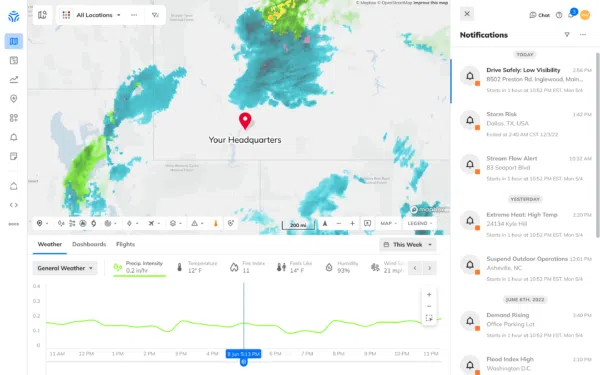
Combining AI with better weather forecasting can significantly improve weather logistics operations. Understanding the available tools and learning how those enhancements could boost efficacy within transportation and logistics is key.
Leveraging Tomorrow.io’s Weather AI for Superior Logistics Efficiency
To combat the impending effects of weather on transportation, we need better tools to predict adverse weather events and advise on what to do during them.
That’s where tools like Tomorrow.io, an industry-leading provider of next-generation weather intelligence services, come in. Tomorrow.io’s weather and climate security software provides information to various sectors, including logistics and transportation.
Integrating AI and Space Technology for Precision Weather Intelligence
Harnessing AI algorithms, cutting-edge sensor technologies, breakthrough space technology, and weather AI in the form of Gale, the world’s first climate generate chat, Tomorrow.io provides precise hyper-local forecasts and insights for transportation and logistics.
Tomorrow.io’s predictive models transform raw meteorological data into actionable insights for strategizing around impending weather disruptions. These insights offer a superior forecasting solution and enable businesses to plan effectively against severe weather conditions — from blizzards that could impede road transport or strong sea currents that may affect maritime logistics.
Addressing the significant impact of weather on logistics demands the use of predictive tools. Tools that excel in forecasting adverse weather events and also advise on proactive measures to mitigate potential disruptions.
Tomorrow.io’s Satellite Constellation: A Milestone in Weather Forecasting
Making history, Tomorrow.io launched proprietary weather radar satellites, Tomorrow-R1 and Tomorrow-R2, into Earth’s orbit, heralding a transformative age in global weather forecasting. Underpinned by our generative weather and climate AI, these satellites constitute a constellation that permits near-real-time monitoring of precipitation and atmospheric conditions – a revolutionary leap providing a significantly more accurate and timely weather forecast.
Gale: Tailored Weather AI for Logistics
Gale, the world’s first AI-driven climate chat, further enhances Tomorrow.io’s capabilities. Gale provides more than just weather information; it crafts a conversational interface where users can interact, ask questions, and receive personalized weather insights for their specific logistics needs.
Predictive Models: Optimizing Logistics Operations
Tomorrow.io’s predictive models form the backbone of our services. These models convert raw meteorological data into valuable, actionable insights. The result? Logistics and transportation businesses can strategize proactively around potential weather disruptions, facilitating better route planning, improved delivery times, and enhanced supply chain resilience in the face of severe weather conditions.
Filling the Global Weather Information Gap
Tomorrow.io’s next-generation weather intelligence services are more than just weather monitors. They offer location-specific insights and AI-powered predictions that allow businesses to secure their logistics operations, safeguard their employees, and maintain service quality, regardless of weather conditions.
By integrating pioneering space technology, we’ve improved the accuracy of weather forecasting while ensuring worldwide access to unparalleled weather intelligence. This global reach marks a significant stride toward closing the weather information gap, which is particularly beneficial for logistics operations in regions currently outside reliable weather radar coverage.
How Does Better Weather Forecasting Improve Transportation and Logistics?
Elevated quality forecasting, such as Tomorrow.io, brings about notable improvements in various aspects of the industry:
- Improved Planning
- Enhanced Safety
- Increased Efficiency
In essence, leveraging powerful AI tools enables companies involved in transportation and logistics to harness the power of artificial intelligence when battling unpredictable climate phenomena; This consequently leads to smarter decision-making processes that are safety-oriented while maximizing operational efficiencies.
How Can Weather AI Enhance Logistics Operations?
Weather AI enhances logistics and operations in a number of ways, from improving driver safety to reducing trucker downtime and increasing cost savings, artificial intelligence in transportation is radically transforming the industry landscape.
Boosting Supply Chain Resilience
Weather AI can significantly contribute to supply chain resilience. By providing accurate and timely weather information, AI can help logistics companies anticipate and prepare for potential weather disruptions. AI can minimize unexpected delays and reduce the risk of cargo damage, resulting in more reliable and resilient supply chains. In an era of increasingly volatile weather due to climate change, the importance of a weather-resilient supply chain is clear.
Improving Driver Safety
One benefit of leveraging weather AI is improving driver safety, especially during severe weather conditions.
Incorporating sophisticated weather AI can mitigate the risk of potential crashes by providing real-time updates on impending high impact weather such as heavy fog, storms, or icy road conditions. This mitigation allows timely rerouting of delivery routes where necessary, ultimately ensuring the drivers’ safety.
Some next-generation tools even come armed with advanced alert systems sending push notifications directly to the trucks’ connected devices, thereby keeping drivers one step ahead of potential dangers.
Reducing Trucker Downtime
Aside from the safety aspects, using state-of-the-art weather AI for transportation and logistics also furnishes another significant benefit – it reduces trucker downtime substantially. Deliveries often get delayed due to inclement weather leading to unmet deadlines and additional overhead expenses.
With predictive intelligence courtesy of AI, advanced forecasting enables logistics companies to schedule maintenance activities or route adjustments preemptively, thus minimizing unexpected halts in the operation cycle.
Increasing Cost Savings
Lastly, implementing artificial intelligence in transportation results in enormous cost savings across multiple fronts. These range from fuel efficiency achieved through optimal routing avoiding adverse weather patches – saving millions annually on fuel costs alone – all the way down to reduced insurance premiums thanks to improved driver safety records.
Optimizing logistics operations around fluctuating weather via artificial intelligence provides an undeniable win-win scenario for logistics businesses and their clients. Not only does this approach streamline operational efficiency, but more importantly, it cultivates a safer workspace for our hardworking fleet on roads giving them the peace of mind they deserve.
Conclusion
As the need for efficiency in transportation and logistics continues to rise, AI is paving the way forward. From enhancing safety measures to aiding cost-saving strategies, utilizing weather AI in the transportation and logistics industry is indispensable.
By adopting AI transportation techniques like intelligent rerouting and early warning systems, one can measure improved efficiency and contribute toward a safer workspace for truckers nationwide. It’s about enhancing visibility in difficult situations while countering climate change uncertainties.
Interested in learning more about the power of AI for transportation?

